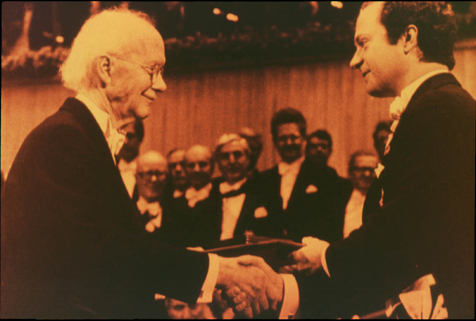
Faculty Research 1980 - 1989
A cellular enhancer of retrovirus gene expression in embryonal carcinoma cells.
Document Type
Article
Publication Date
1987
Keywords
Base-Sequence, Chromosome-Deletion, DNA: me, Enhancer-Elements-(Genetics), Gene-Expression-Regulation, Genes-Regulator, Genes-Viral, Mice, Nucleic-Acid-Hybridization, Plasmids, Retroviridae: ge, SUPPORT-NON-U-S-GOVT, SUPPORT-U-S-GOVT-P-H-S, Teratoma: fg, mi, Transcription-Genetic, Transduction-Genetic
First Page
3748
Last Page
3752
JAX Source
Proc-Natl-Acad-Sci-USA. 1987 Jun; 84(11):3748-52.
Grant
CA39652, RR05545, RR02275
Abstract
Murine embryonal carcinoma (EC) cells are refractory to infection by retroviruses because retroviral long terminal repeat (LTR) enhancers have little activity in EC cells. A previous report described the isolation of clonal EC cell lines that express the integrated neomycin-resistance gene (neo) linked to the Moloney murine leukemia virus LTR. The expression of the neo gene was explained by a cis-acting mechanism [Taketo, M., Gilboa, E. & Sherman, M. I. (1985) Proc. Natl. Acad. Sci. USA 82, 2422-2426]. From one such EC cell line, we isolated the flanking cellular sequence 5' to the proviral genome, ligated it to various test constructs, and transfected into the parental EC cells. The cellular sequence increased expression of the LTR-linked neo gene significantly, in a manner independent of its orientation and position. The neo mRNA was initiated at the bona fide promoter of the LTR. By deletion analyses, we defined a region of DNA essential for the enhancer activity and determined its sequence. This region contains distinctly characteristic stretches as well as some similarity to various viral and cellular enhancers. Thus the LTR-linked neo gene is expressed because the provirus is integrated in the vicinity of this enhancer that is active in undifferentiated EC cells.
Recommended Citation
Taketo M,
Tanaka M.
A cellular enhancer of retrovirus gene expression in embryonal carcinoma cells. Proc-Natl-Acad-Sci-USA. 1987 Jun; 84(11):3748-52.

